Why you can trust Tom's Hardware
Our standard benchmarks and power tests are performed using the CPU’s stock frequencies (including stock Thermal Velocity Boost), with all power-saving features enabled. Optimized defaults are set in the BIOS and the memory set using profiles. For this baseline testing, Windows is set to High Performance before we switch over to Balanced during power testing, so the PC idles appropriately.
Synthetic Benchmarks
Synthetics are a great tool to figure out if a board runs out of spec, as identical settings should produce similar performance results. Advanced memory timings are the one place where motherboard makers can still optimize for either stability or performance, though, and those settings can impact some testing.
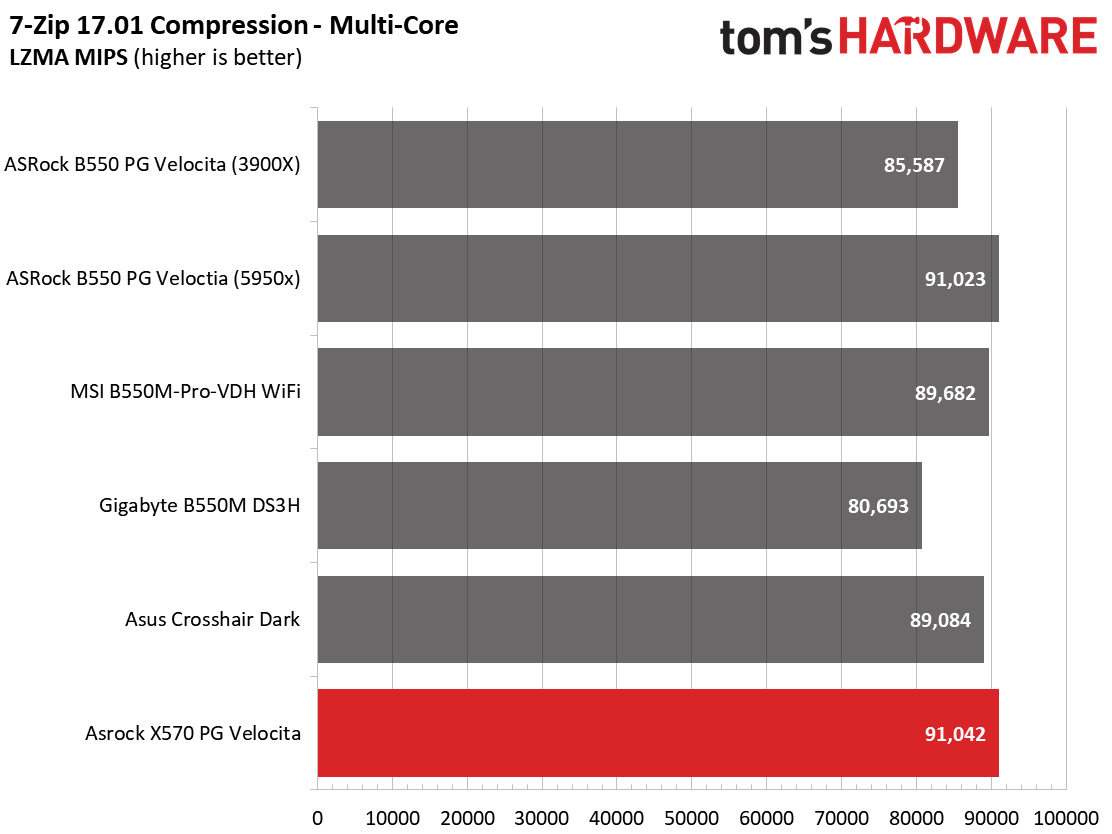
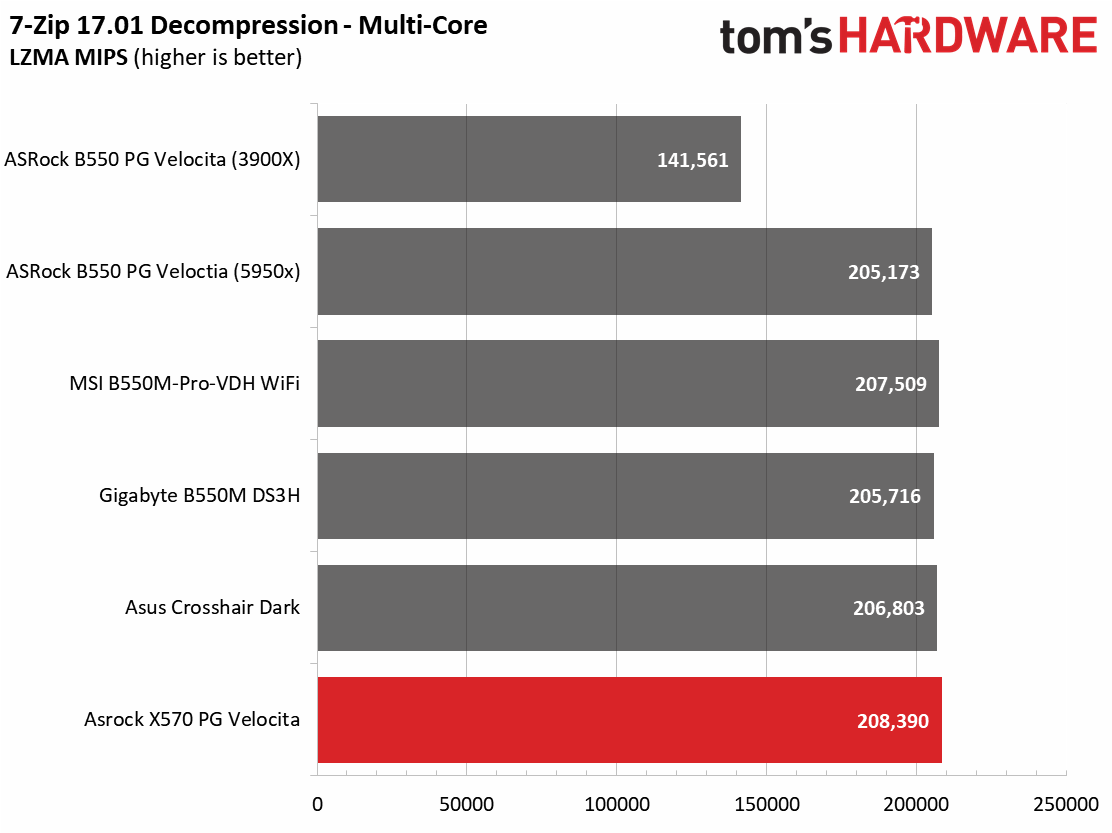


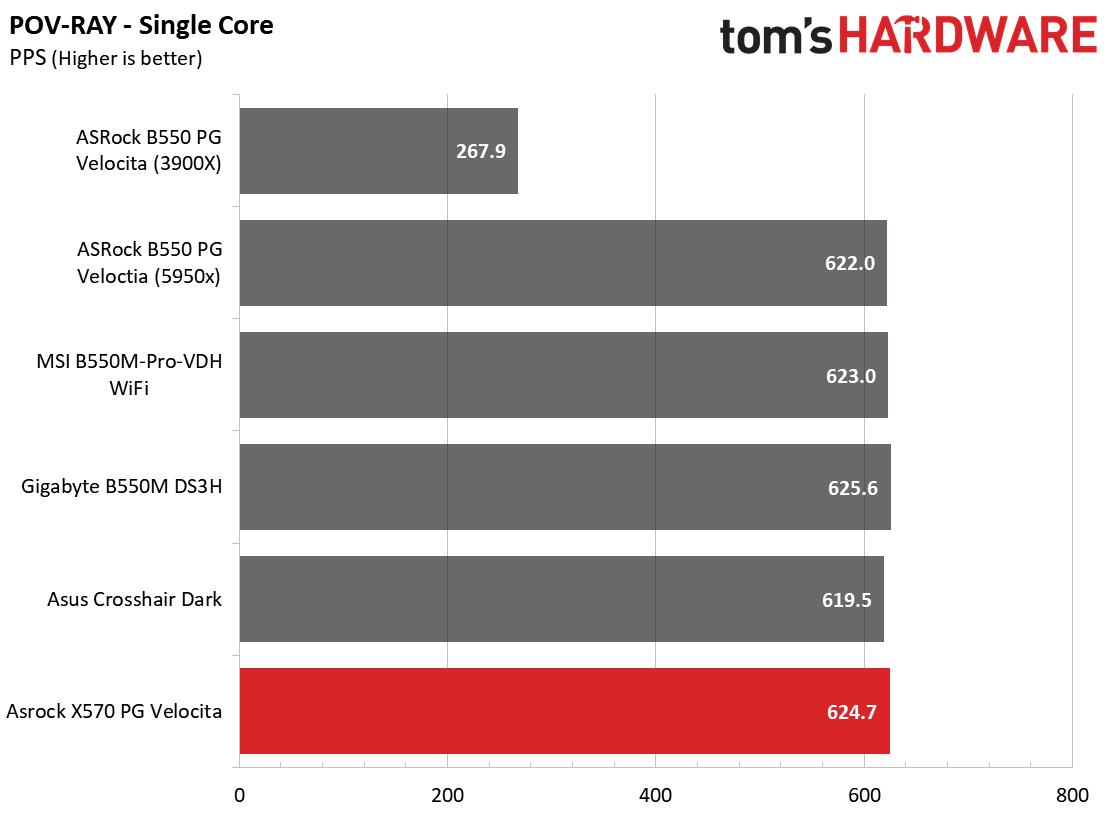

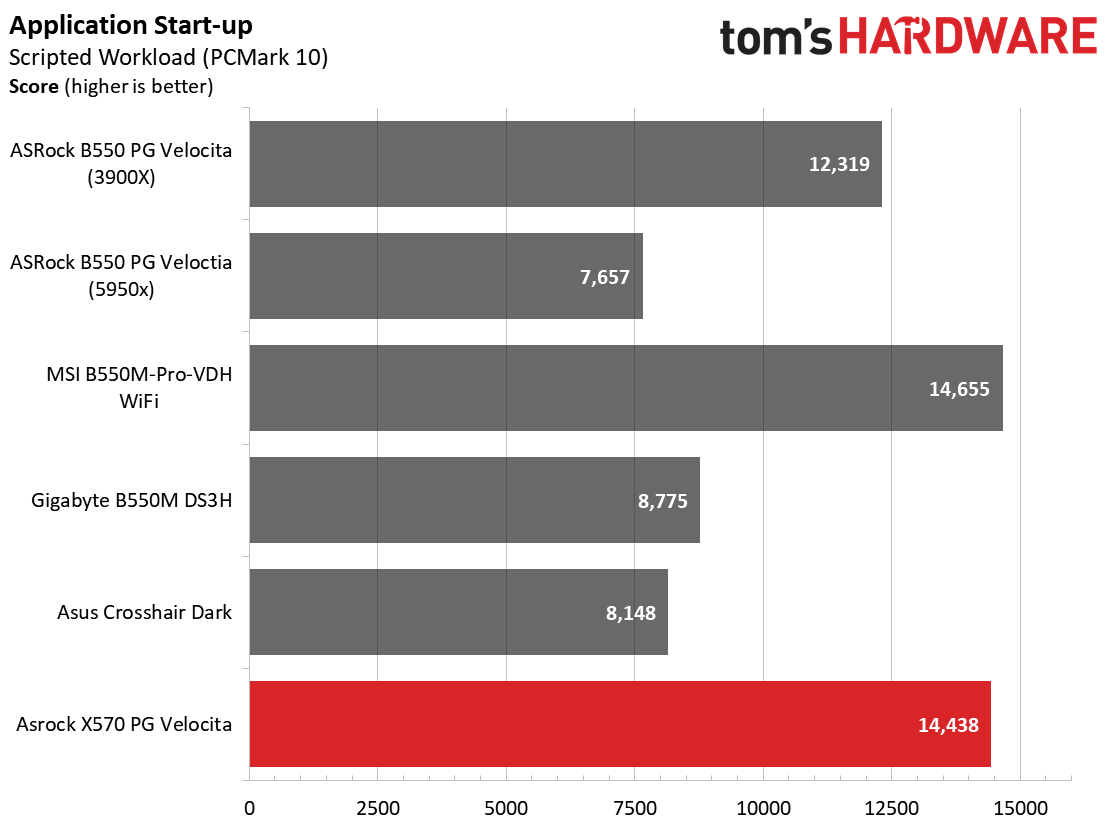
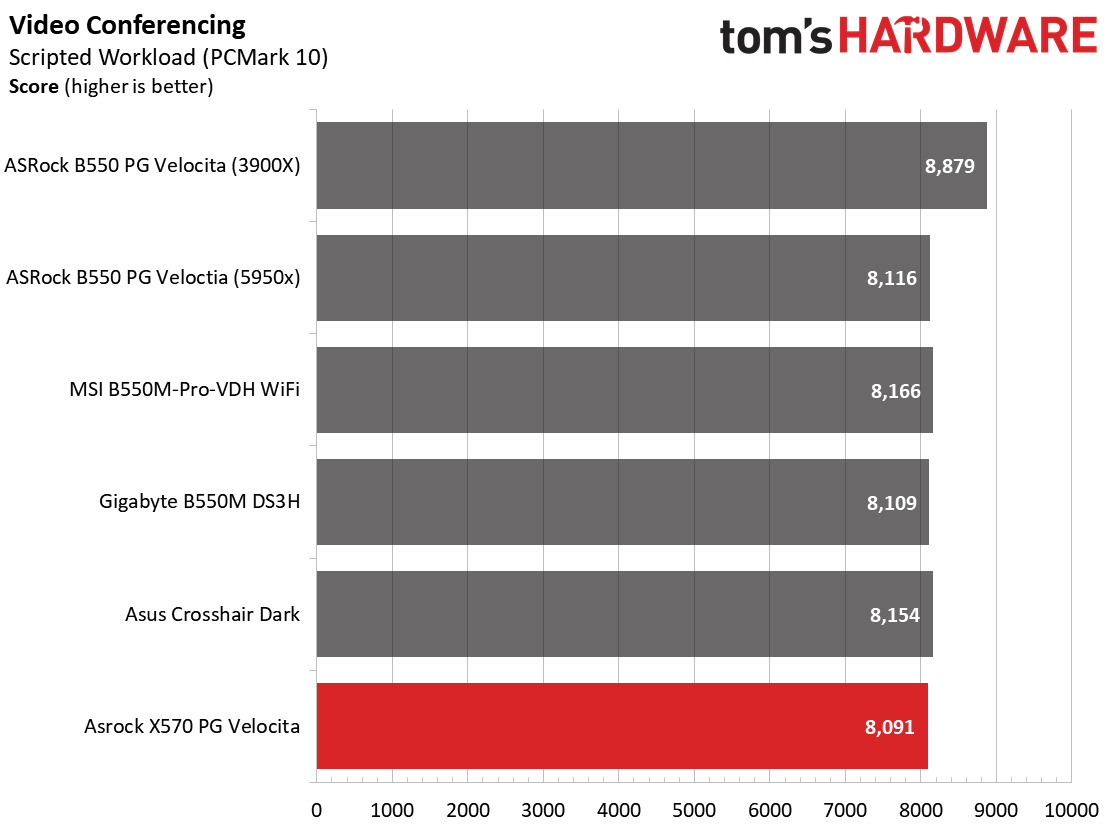
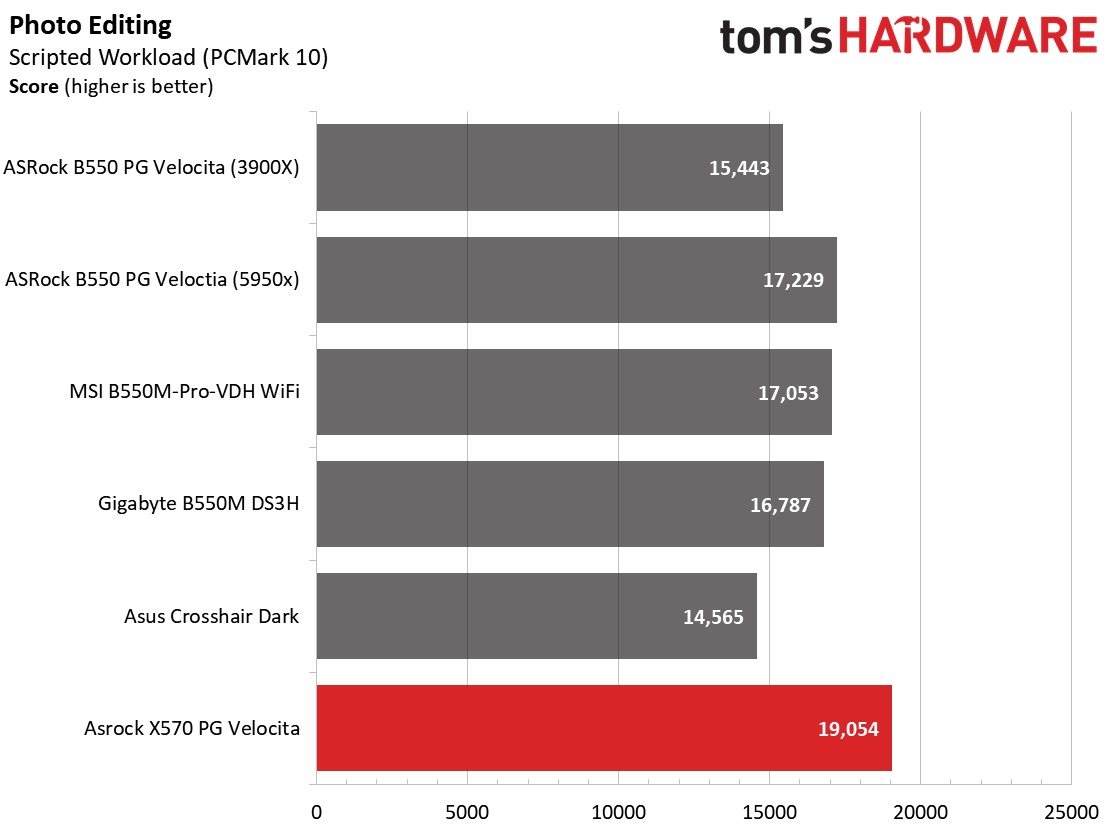
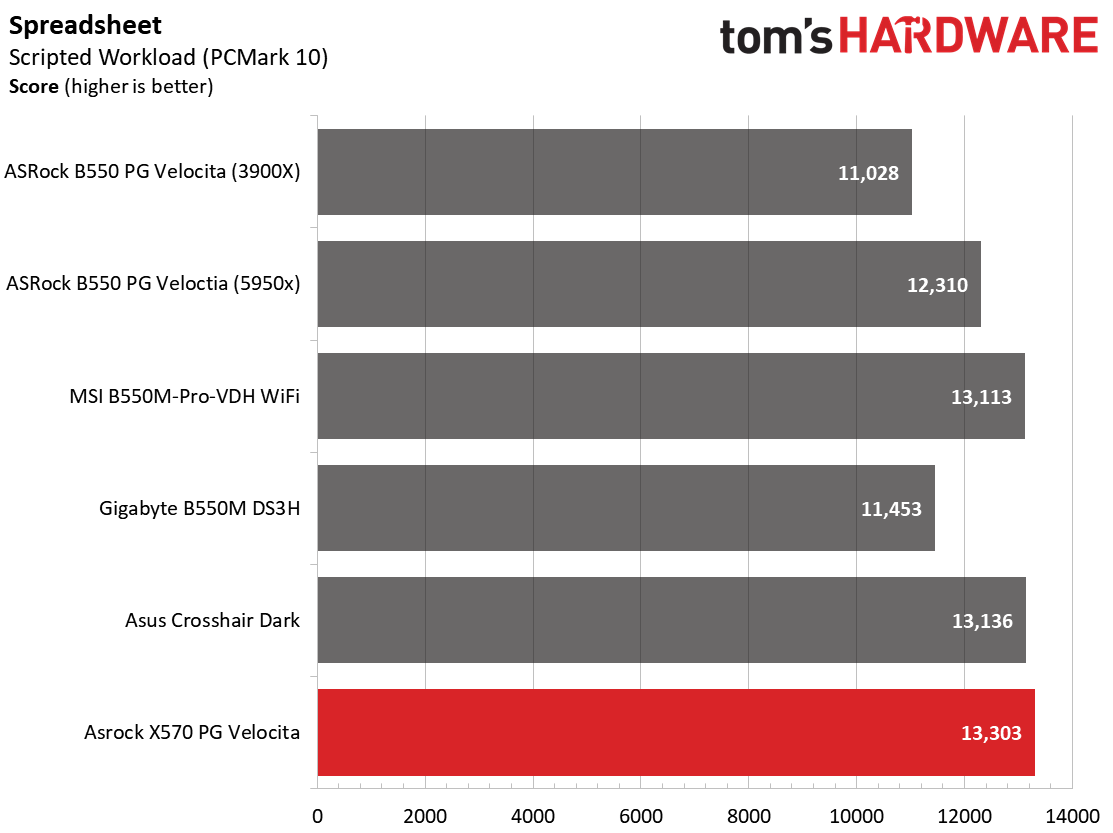
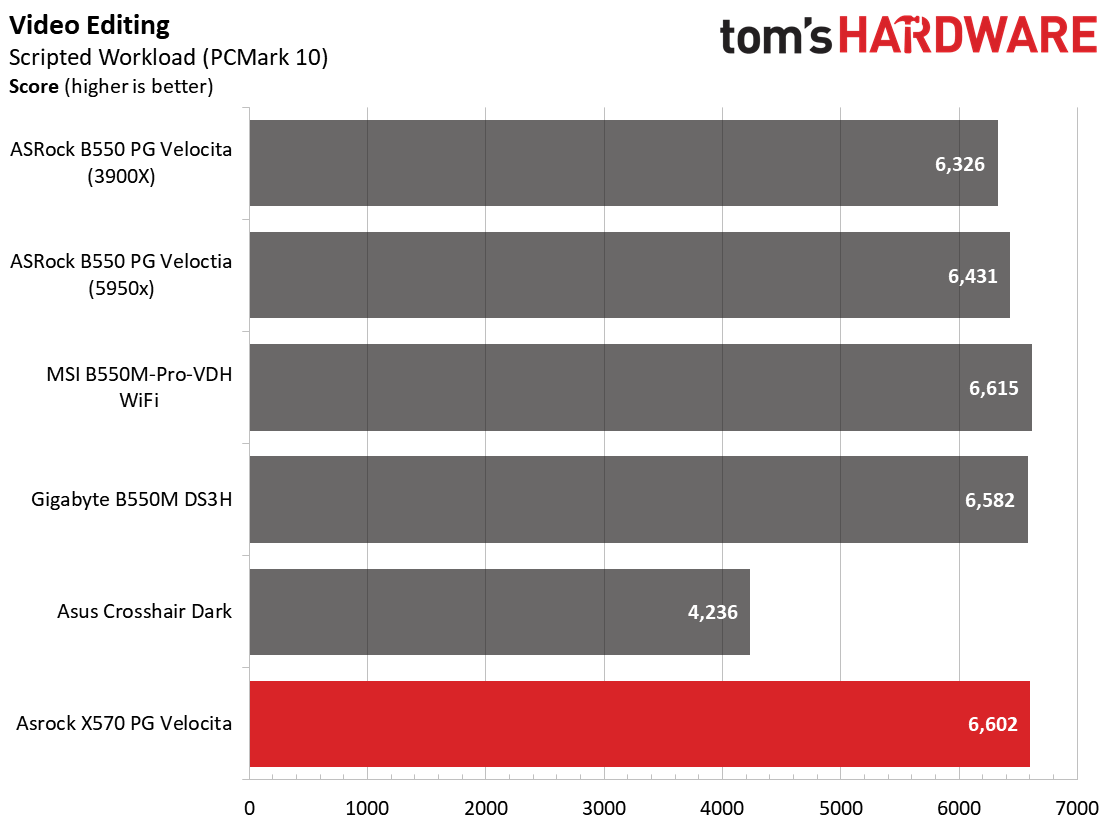
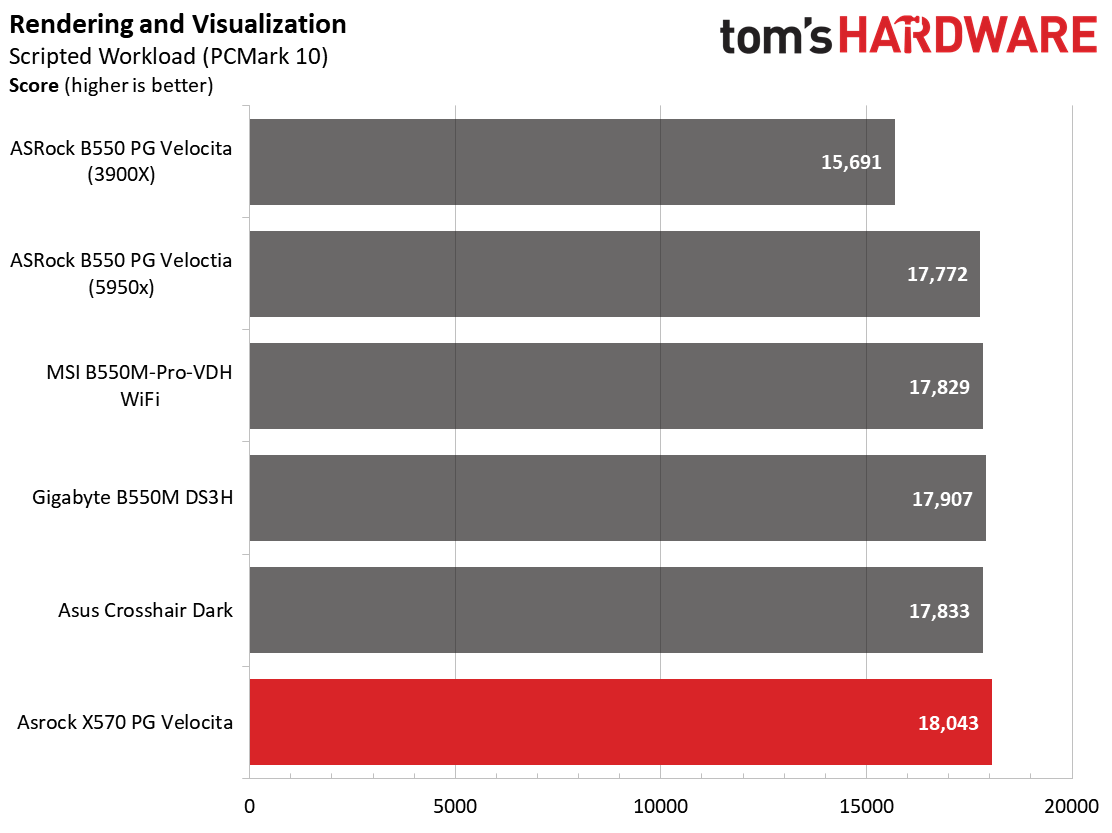

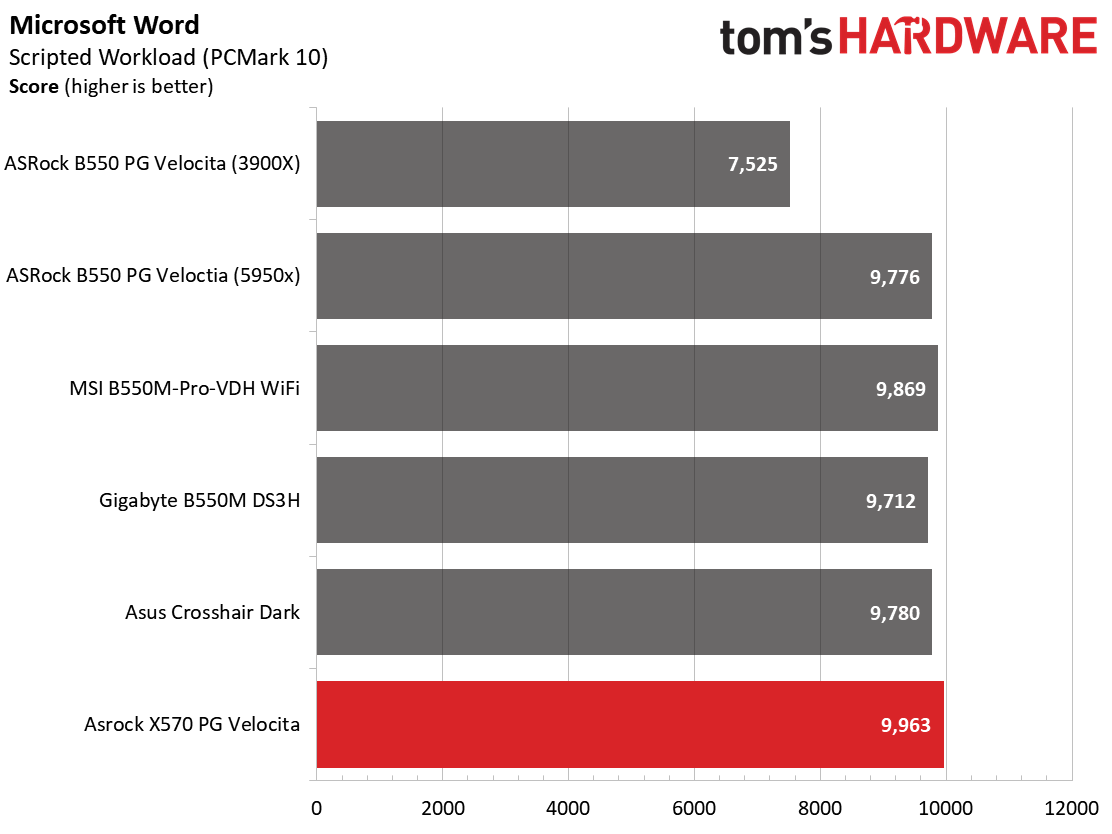

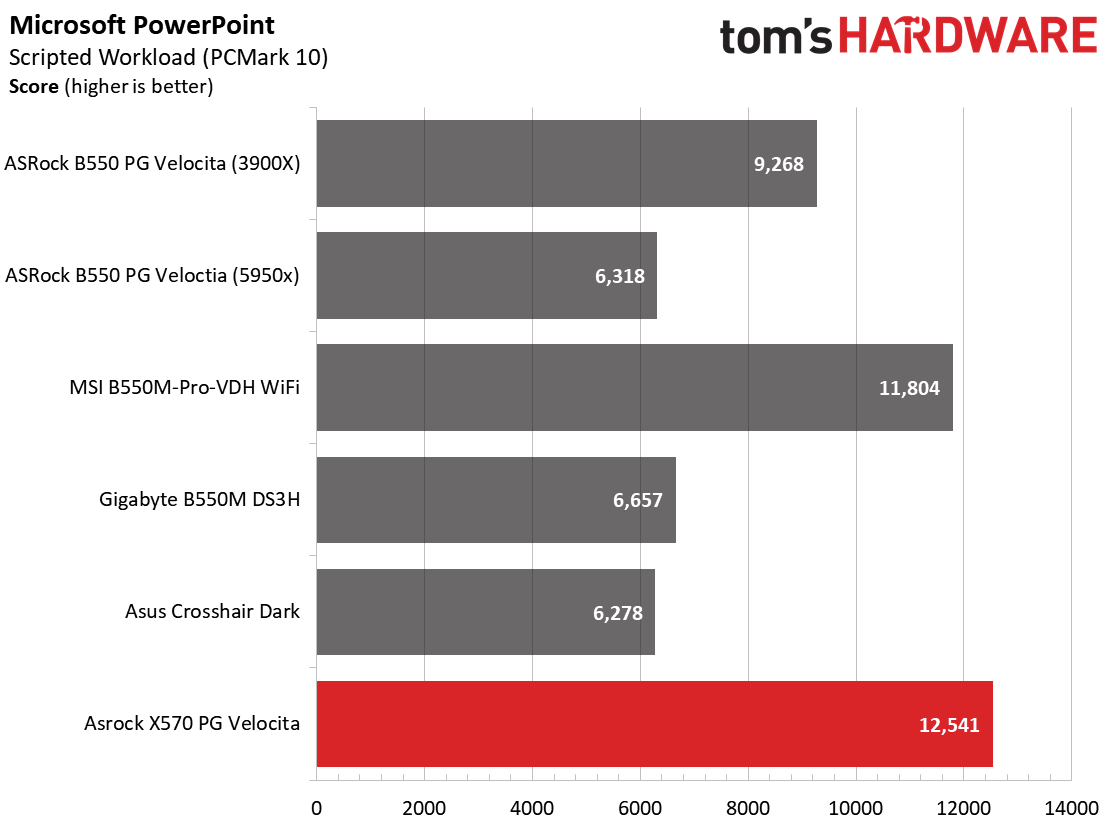
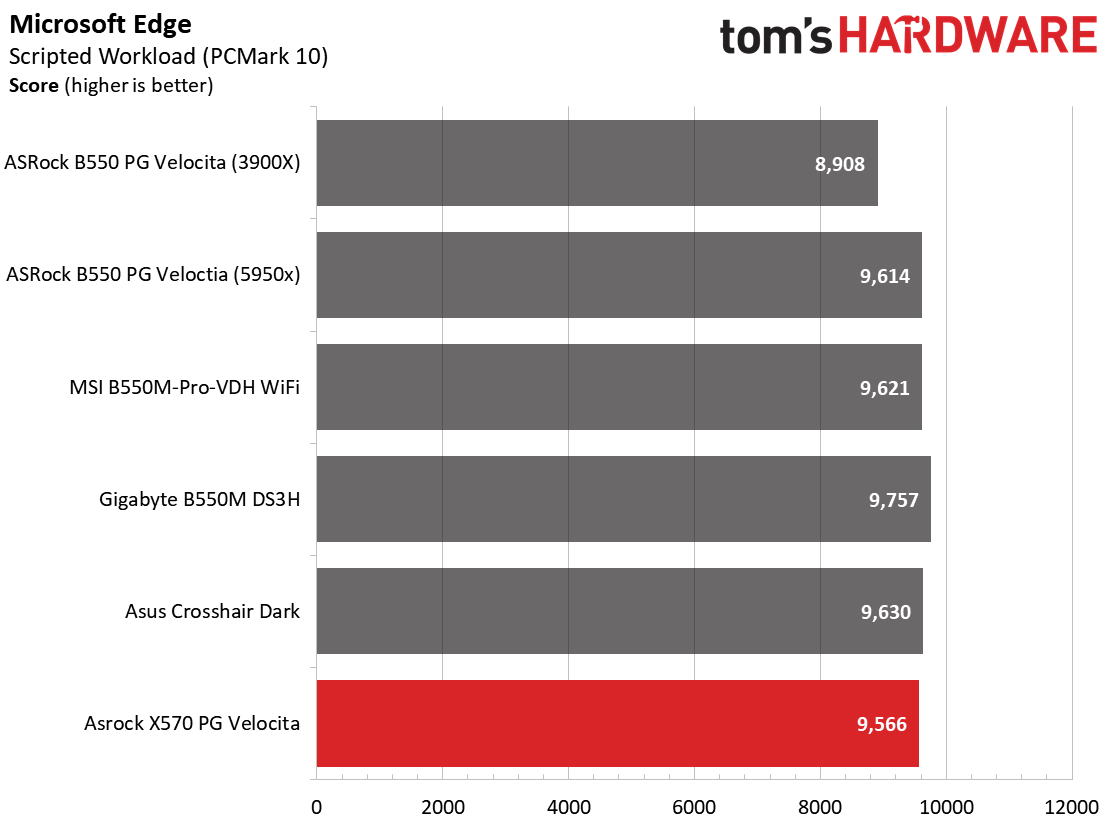

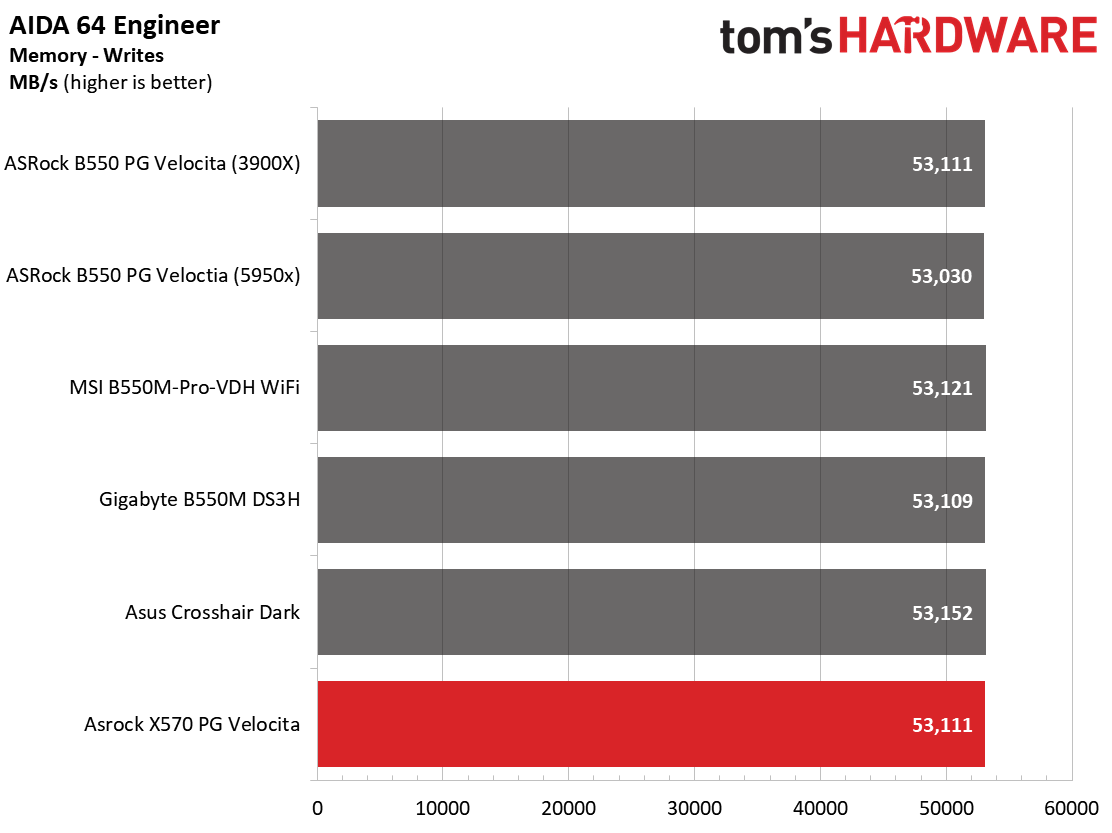

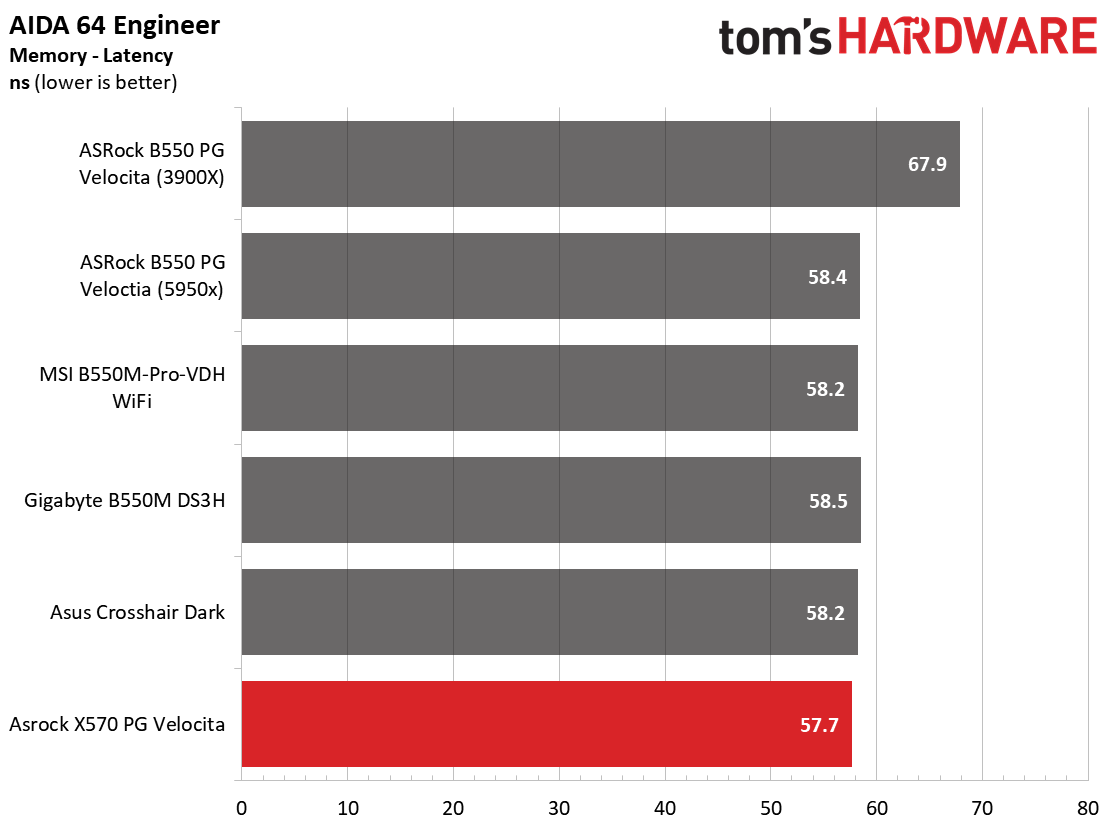
In our synthetic benchmarks, the X570 PG Velocita performed as expected. Compared to the 3900X, any multi-threaded tests showed significant improvement, as did single-threaded optimizations due to clock speed increases and IPC differences. We didn’t see anything outstanding here outside of PCMark being a bit wonky on the startup times.
Timed Applications

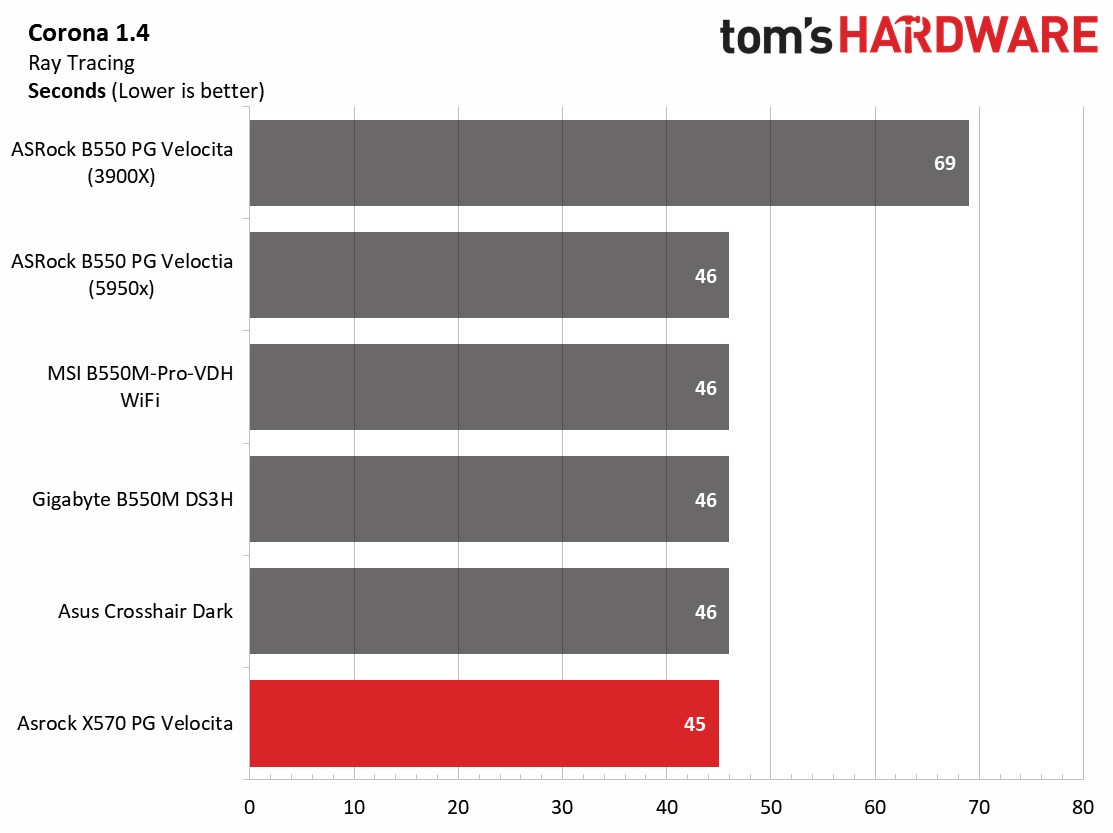
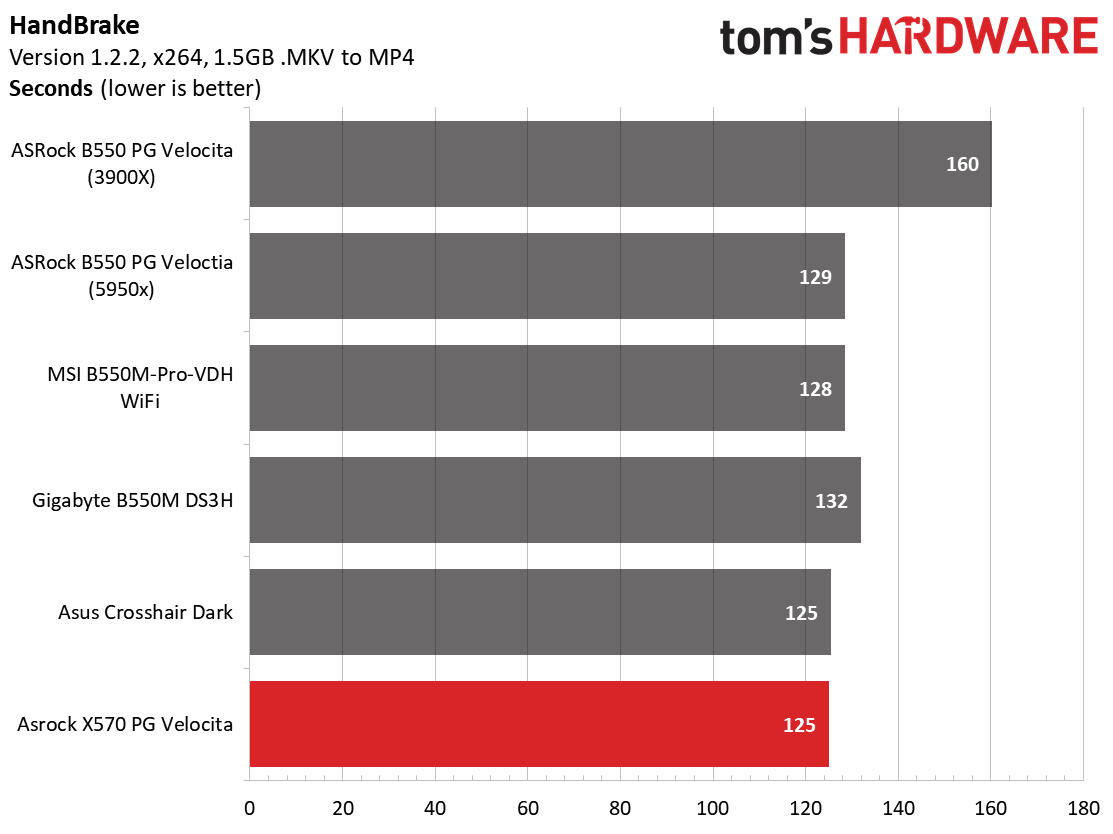

Moving on to timed applications, surprisingly, the LAME test showed the Velocita a bit slower than the other boards with the same CPU. This result is a bit curious as the CPU boosts without issue. On the other hand, the Handbrake tests showed the X570 PG Velocita to be one of the faster results so far.
3D Games and 3DMark
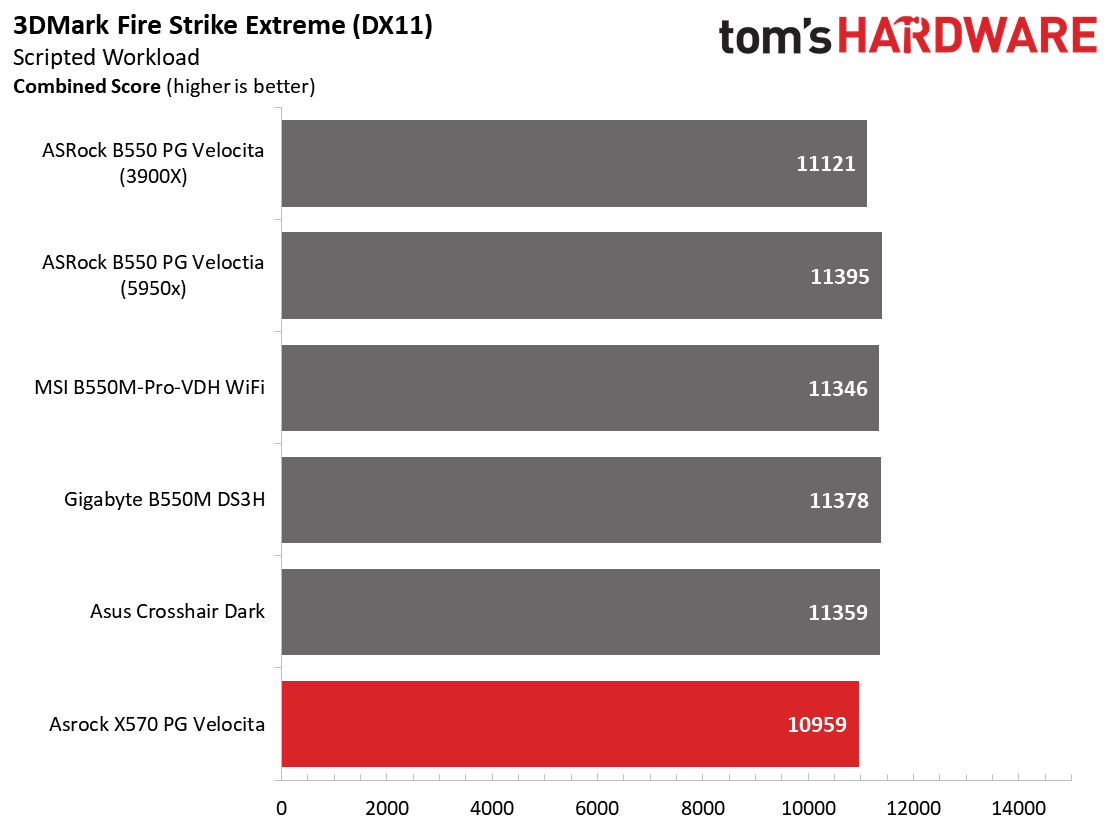

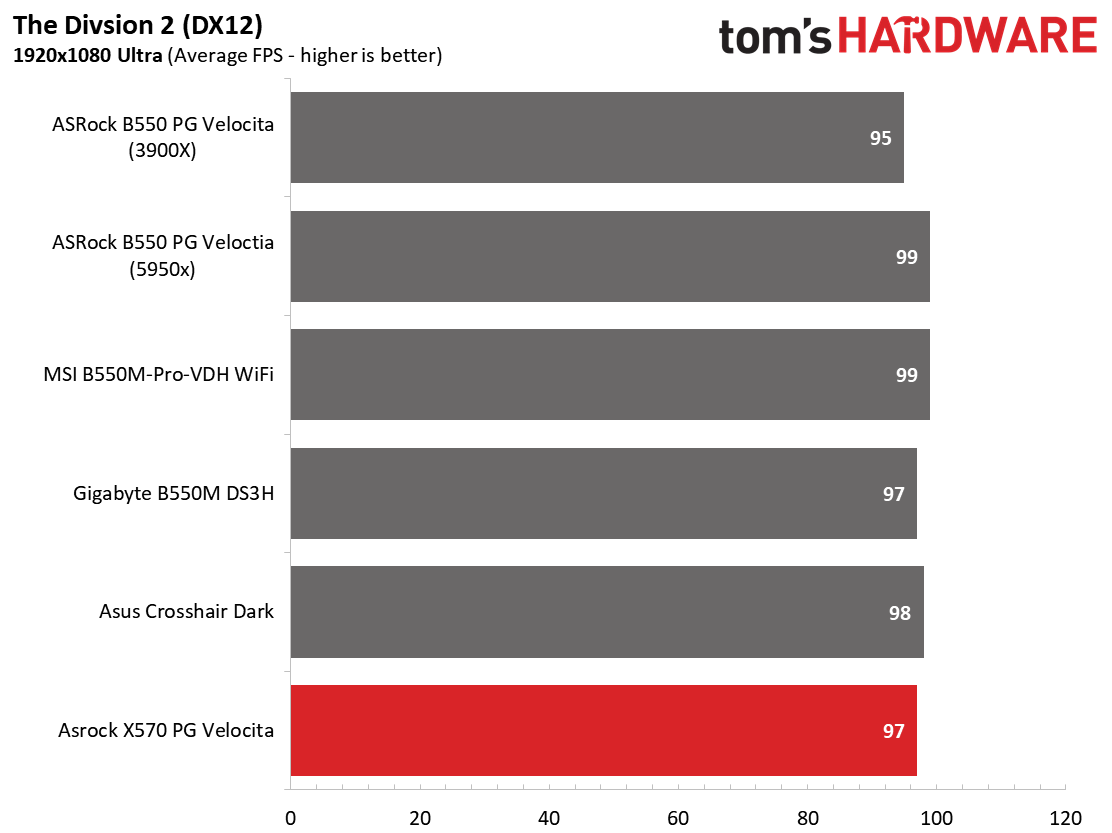
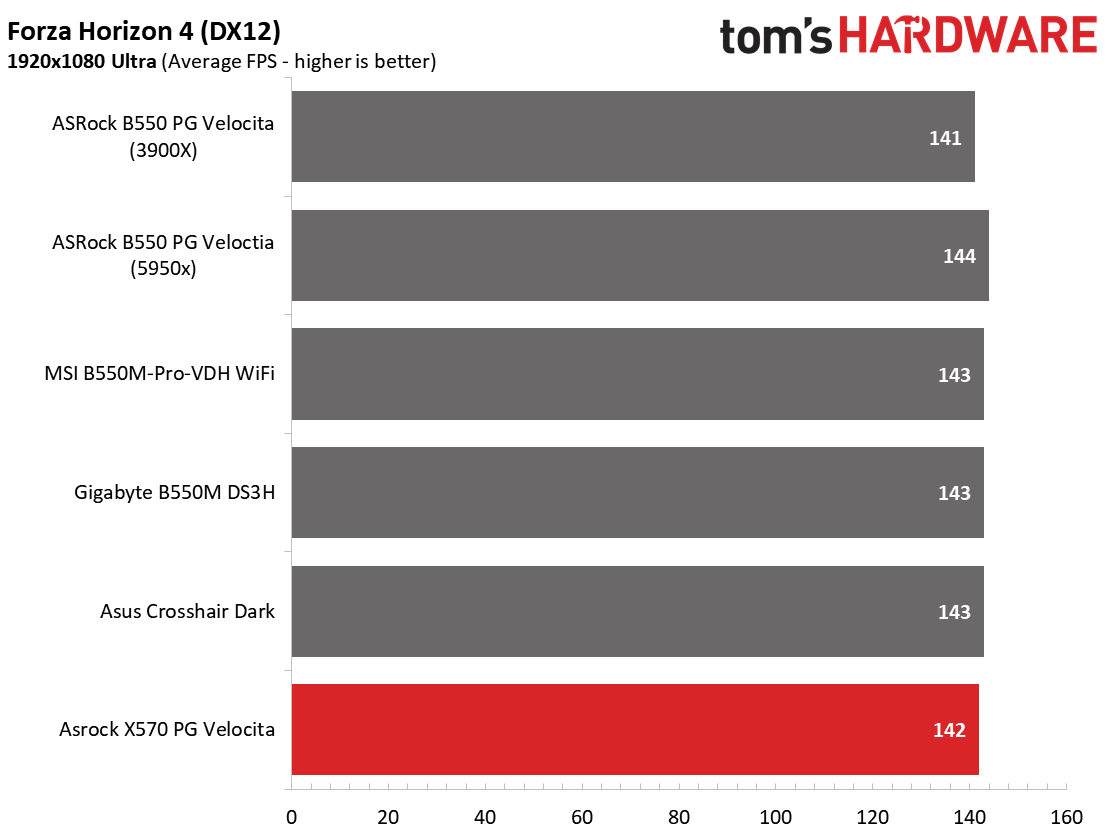
We’ve recently updated our game tests to The Division 2 and Forza Horizon 4. The games are run at 1920x1080 resolution using the Ultra preset. As the resolution goes up, the CPU tends to have less of an impact. The goal with these settings is to determine if there are differences in performance at the most commonly used resolution with settings most people use or at least strive for.
During our gaming tests, we saw appreciable gains when moving from the 3900X to the newer 5950X. Between the clock speeds, IPC and large cache differences, performance increased using this CPU at our 1080p test resolution. If you game at a higher resolution, chances are you won’t see those gains unless you’re using one of the new, ultra-fast Nvidia or AMD GPUs. That said, the Velocita had no problem with games, easily mixing in with the rest of the newly tested boards in both 3DMark and actual games.
Power Consumption / VRM Temperatures
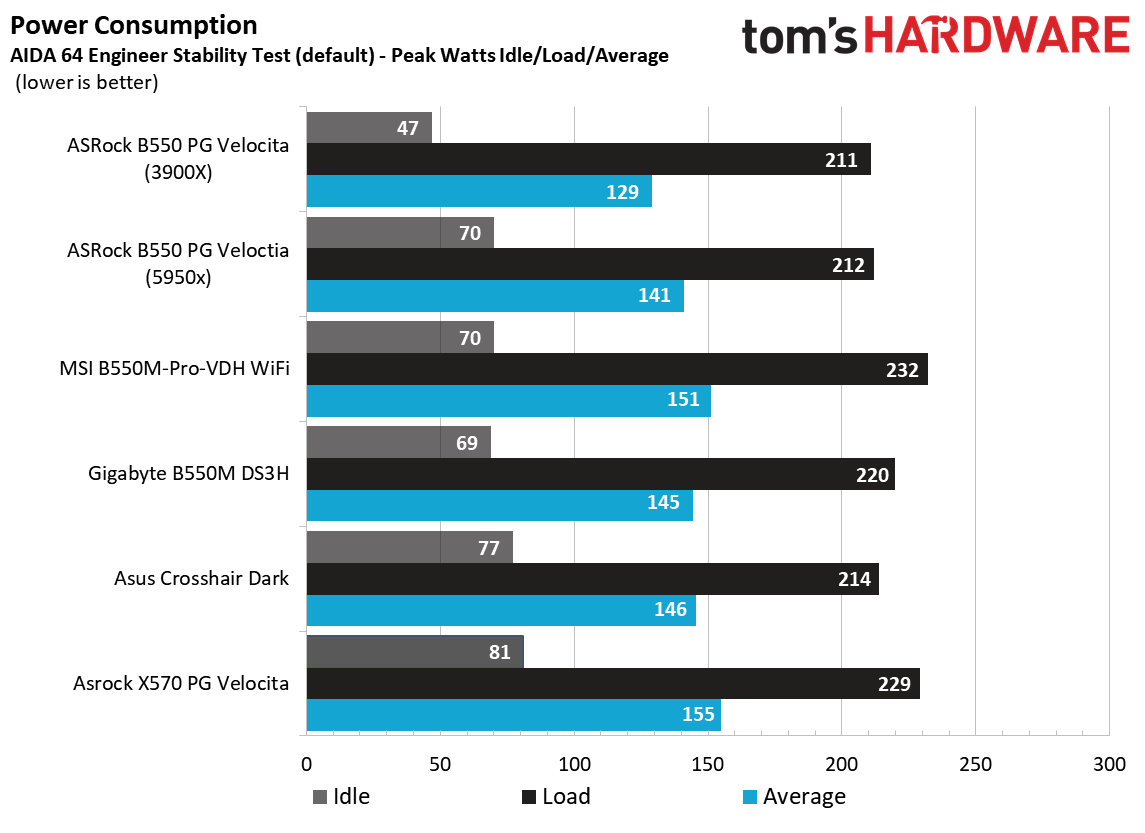
For power testing, we used AIDA64’s System Stability Test with Stress CPU, FPU and Cache enabled, using the peak power consumption value. The wattage reading is from the wall via a Kill-A-Watt meter to capture the entire ecosystem. The only variable that changes is the motherboard; all other parts are the same.
Get Tom's Hardware's best news and in-depth reviews, straight to your inbox.
At idle, the X570 PG Velocita consumed 81 Watts from the wall, which is the most of the tested boards so far. Load wattage was also a bit higher, peaking at 229W. Between the two, this averages out to the most power used so far. But the difference is only a few Watts, so it won’t be noticeable on your electric bill.
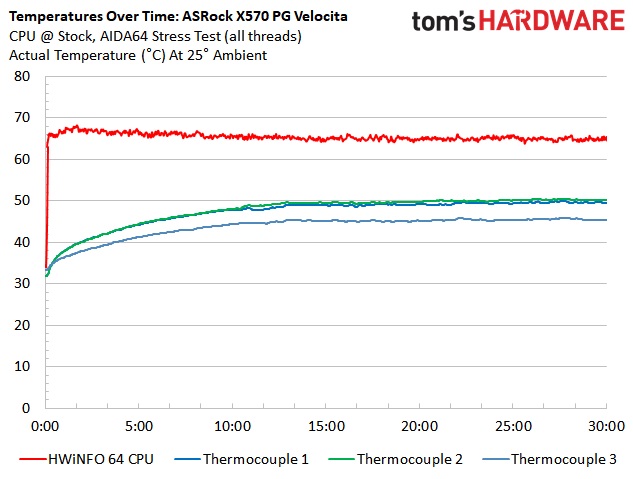
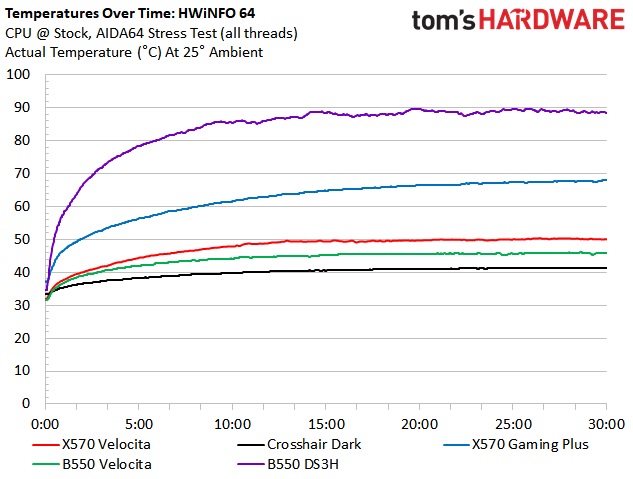
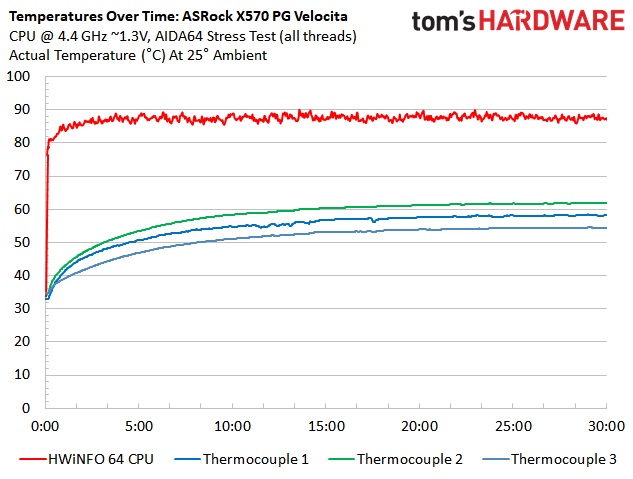
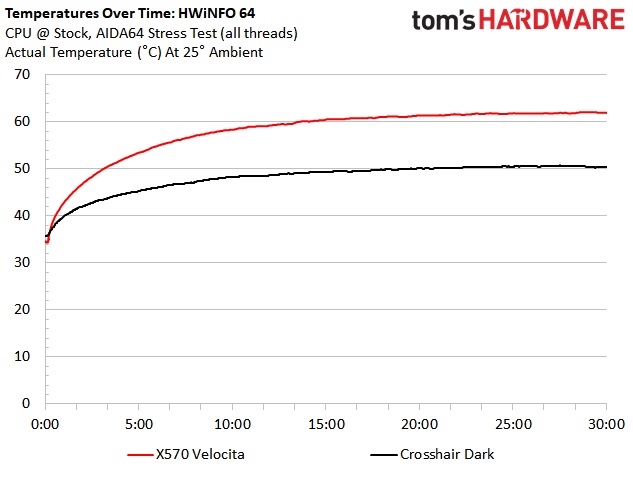
The X570 Velocita’s 14-phase, 50A power bits for the CPU handled our testing without issue. During stock runs, the hottest point on the VRM was 51 degrees Celsius. HWinfo wasn’t able to read the VRM sensor on this board, so we excluded that value in the charts. With our Ryzen 9 5950X overclocked to 4.4 GHz and ~1.3V, VRM temps reached 62 degrees Celsius. These values are well within the MOSFETs’ operating parameters. The tiny fans on the heatsinks were inaudible at these speeds using default settings.
Overclocking
There are several ways to overclock on AMD platforms, depending on your goals. If your focus is single-threaded performance, you may want to focus on using Precision Boost Overdrive (PBO) and adjusting its parameters. If you can use all cores and threads, setting a manual CPU multiplier and voltage is likely the better route. While the latter clips peak single-threaded performance a bit, it increases all core/thread performance over the all-core boost. To that end, we settled on 4.4 GHz at ~1.3V for an all core/thread overclock.
The PG Velocita handled our 16-core/32-thread Ryzen 9 5950X without issue. Vdroop was not a significant issue with LLC left on auto for this board. For ambient overclocking, you have nothing to worry about.

On the memory side, we know AMD is limited to around 3600/3733 MHz when keeping FCLK at a 1:1 ratio with the memory. With this in mind, we add two more sticks and run 4x8GB at DDR4 3600, which is AMD’s current sweet spot. Here we didn’t run into any issues. It was set XMP, and forget it!
Final Thoughts
The X570 PG Velocita is ASRock’s third iteration of this board. We’ve seen Z490 versions and B550 versions already come out and, for the most part, seemed to be readily accepted by reviewers and users alike. The X570 Velocita takes what B550 had and brings it up a level. You not only get more PCIe 4.0 lanes for peripherals and storage, but the company added speedy next-gen Wi-Fi capability as well, in a resonably $246.99 (MSRP) package.
The ~$250 price point puts this board in direct competition with the MSI MPG Z570 Gaming Pro Carbon WiFi ($259.99), the Gigabyte Aorus Pro WiFi ($269.99), and the Asus Prime X570-Pro ($239.99). Between these boards, the MSI and Gigabyte have Wi-Fi, while the Asus Prime does not. All three of these boards shouldn’t have an issue overclocking the flagship 5950X, but among them, the PG Velocita has the most phases and available amperage for the CPU. If crave SATA-based storage, the Velocita has the most there as well, with eight ports. As far as appearance, most boards should fit in well with many build themes, but beauty is in the eye of the beholder.
ASrock brings a well-rounded and relatively inexpensive motherboard to the mid-range X570 segment with the X570 PG Velocita. Between its solid power delivery, Killer-based networking, and eight SATA ports, the $264.99 street price almost feels like a bargain. The biggest concerns with this board are the chipset fan (set it to quiet, problem solved) and perhaps the aesthetics not matching your build with the prominent red highlighting. Clearly, these aren’t big issues for most people. If you’re looking for a ~$260 board capable of driving the 5950X to its ambient cooled limits with a lot of storage capability and fast networking, the X570 PG Velocita should be on your shortlist.
MORE: Best Motherboards
MORE: How To Choose A Motherboard
MORE: All Motherboard Content

Joe Shields is a staff writer at Tom’s Hardware. He reviews motherboards and PC components.